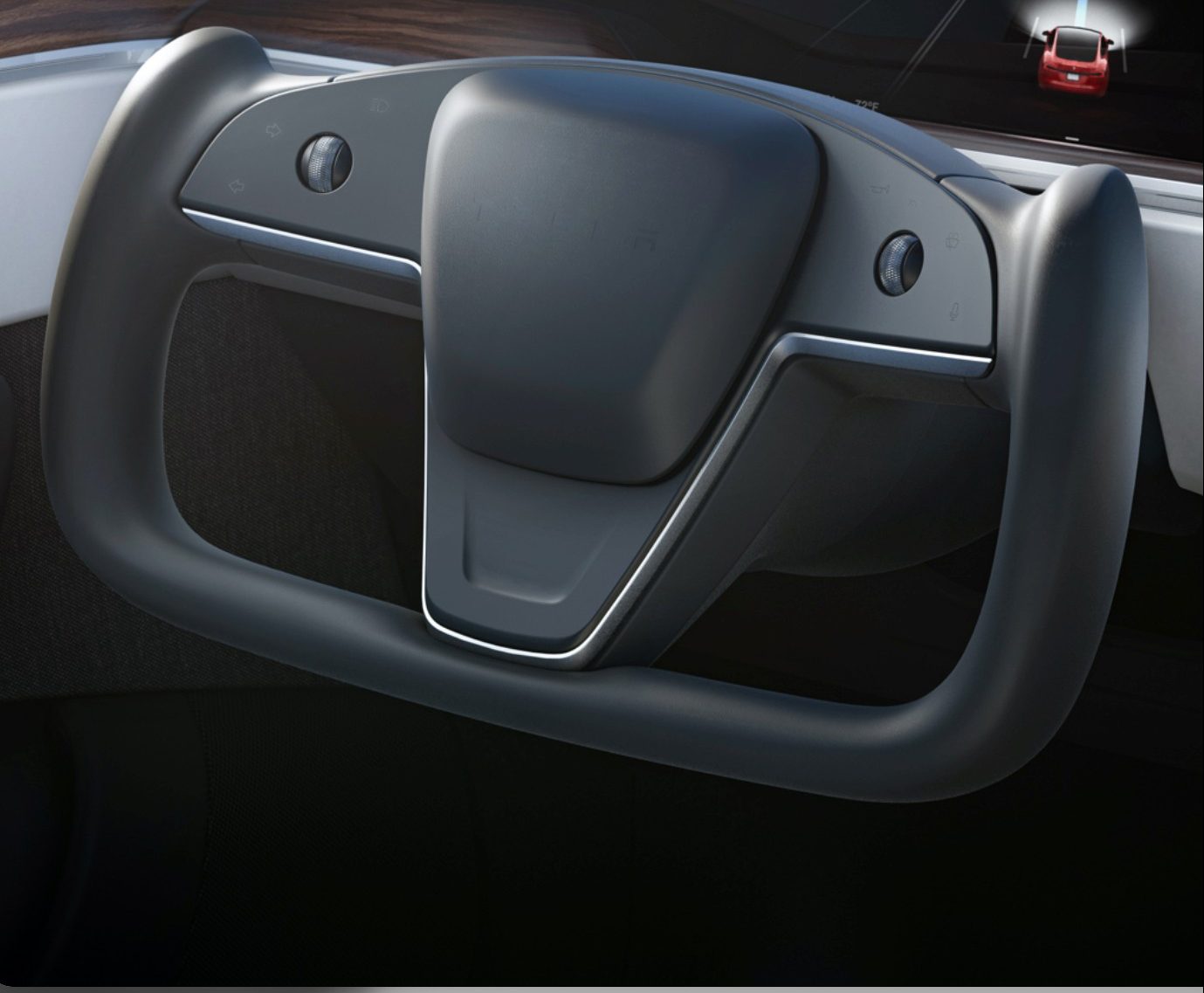
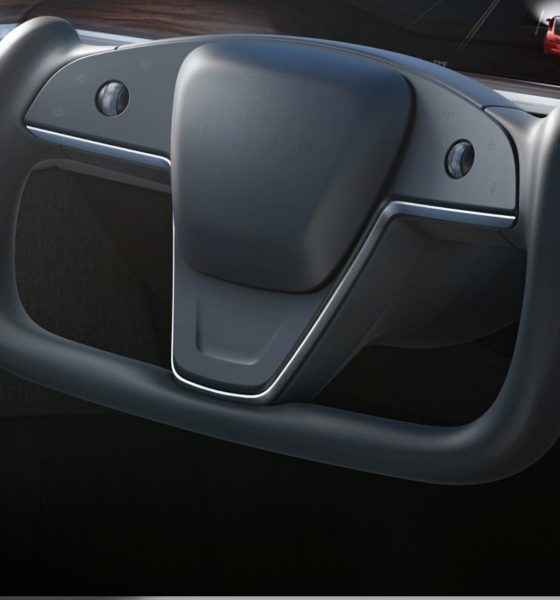
News
Tesla is priming customers for a disappearing steering wheel
Tesla’s introduction of the “Yoke Steering Wheel” with the Model S refresh saw mixed reviews upon initial examination. The always sporty Model S has adopted a new, supercar-like interior, with the Yoke capping off Tesla’s redesign to the flagship sedan.
However, upon further examination, I realized that Tesla isn’t priming the Model S to be a supercar. Of course, the introduction of the face-melting Plaid+ variant is undoubtedly a nod toward those who require a little extra pep from the all-electric powerhouse. However, the Yoke steering wheel is undoubtedly a minimalization of arguably the most necessary piece of a car’s interior. But Tesla’s mission is self-driving, so it seems the company is actually priming drivers to get used to less and less of a steering wheel and could be the reason for the size reduction.
It can be noted that the Yoke does not cover or reduce visibility to the instrument panel or the windshield. It is a low-sitting steering column that provides maximum visibility during a drive. It is certainly complimentary of the new powertrain and performance specifications with its sporty look. However, the big picture is that Tesla is preparing its first sedan for a future of driverless navigation.
This is a preview from our weekly newsletter. Each week I go ‘Beyond the News’ and handcraft a special edition that includes my thoughts on the biggest stories, why it matters, and how it could impact the future.

For the past few months, Tesla has really made some serious leaps in the pursuit of Full Self-Driving. While the company’s robust and intricate FSD Beta is among the most successful self-driving platforms, there is still plenty of room for improvement. Of course, Tesla will take any steps necessary to increase the accuracy of its self-driving project, but really, it only takes the drivers to do that, as the Neural Network continues to make vehicles smarter with every mile driven.
As self-driving moves closer to reality, Tesla is beginning to minimize its interiors even more than ever before. While the HVAC system is now streamlined to eliminate outdated vents, the car is, in effect, becoming a moving entertainment center. As photographs of the new Model S interior show, there are three screens, storage compartments, a steering wheel, and pedals. There is not much more on the inside, appealing to a modern contemporary taste of interior design while still upholding the classic safety standards of the automobile. Things are becoming smaller, more simple, and less cluttered inside the car in preparation for the self-driving future that will inevitably confront us within the near future. When, exactly, nobody knows. But it will be soon, Elon Musk says.
The car, internally, is becoming more sophisticated, smarter, complex, and intricate with every mile driven. The inside of the car is doing the exact opposite. While the parts of the vehicle that control navigation are minimizing or disappearing, the car’s entertainment is becoming the focal point.
Many noticed that while the steering wheel became smaller, it didn’t disappear altogether. It can’t. At least not at this point in time, because Tesla hasn’t attained Level 5 autonomy yet. However, the stalks, which control the turn signals, headlights, wipers, and the gearshift on a Tesla, have all been removed. It’s the beginning of the end of drivers being able to control these features of the car. Eventually, the vehicle will do all of these things without any interference or intervention from the person who is in control.
While the stalks have turned into buttons on the steering yoke, the removal hints toward the next generation of minimalistic Tesla interiors. Eventually, we may think the Model 3 and Model Y interior was clunky and too busy. Looking at past photos of the Model S interior already gives me that feeling when comparing it to the new interior. Of course, things improve over time, and it was only a matter of when Tesla decided to do this, considering the self-driving suite has been a goal of Musk’s for several years.
No stalks on the new Tesla Model S/X steering wheel, so here’s how you use the turn signals pic.twitter.com/bVdGVsvj8t
— Drive Tesla ?? #FSDBetaCanada (@DriveTeslaca) January 28, 2021
Eventually, Tesla will continue to phase out small, insignificant parts of the car to make an easier transition later on when FSD is fully rolled out, and the automaker captures full autonomy. It wouldn’t make sense not to update the interior along the way, and instead, have people go from a car with normal interior designs to a car with literally nothing but screens.
Most importantly, Tesla could also offer a full-wheel setup for those who are not in favor of the Yoke. Many people texted and contacted me, stating that they were not a huge fan of the new design for a daily driver and that it could be more advantageous to introduce the option for a full-wheel design later on. I think that the Yoke is certainly very objective and, while some find it appealing and interesting, others do not. There is no right or wrong answer in terms of what is more advantageous, but Tesla’s goal is to begin preparing drivers for a car that will drive itself, eliminating the need for a wheel or any other regularly used control mechanisms within a car.
It has already begun.
A big thanks to our long-time supporters and new subscribers! Thank you.
I use this newsletter to share my thoughts on what is going on in the Tesla world. If you want to talk to me directly, you can email me or reach me on Twitter. I don’t bite, be sure to reach out!
-Joey

News
Tesla FSD V14.2 starts rolling out to initial batch of vehicles
It would likely only be a matter of time before FSD V14.2 videos are posted and shared on social media.
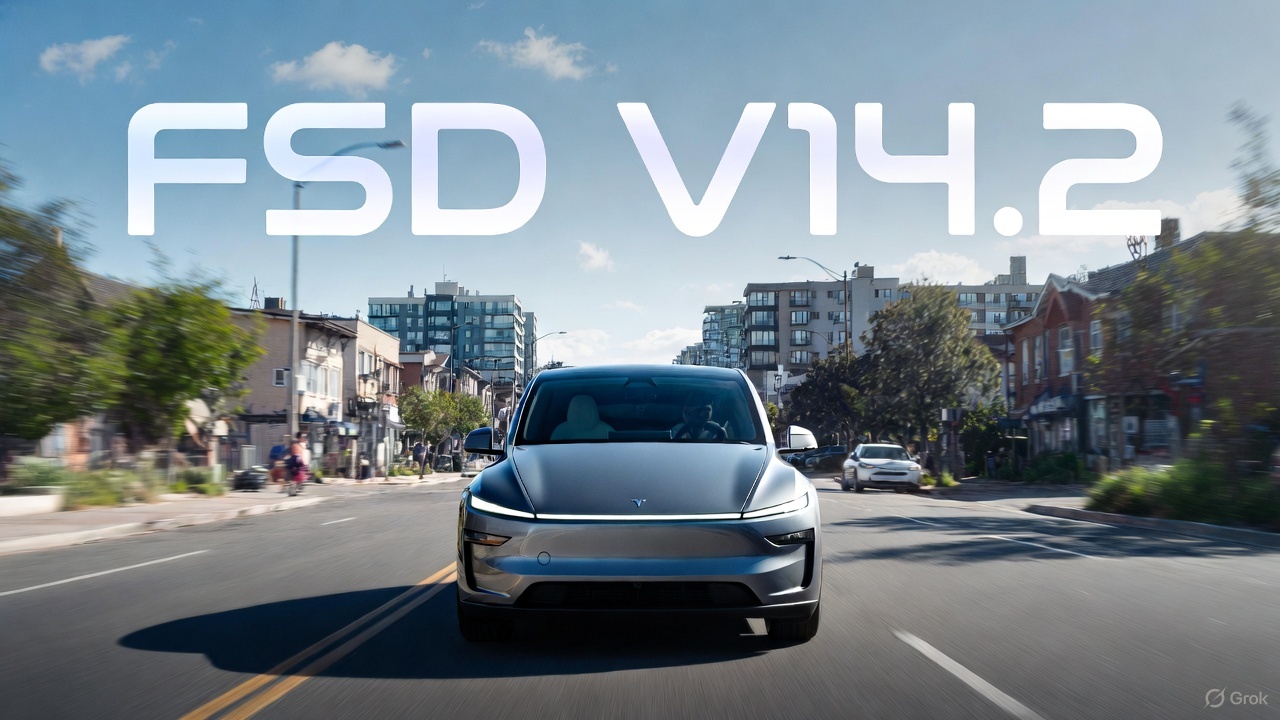
Tesla has begun pushing Full Self-Driving (Supervised) v14.2 to its initial batch of vehicles. The update was initially observed by Tesla owners and veteran FSD users on social media platform X on Friday.
So far, reports of the update have been shared by Model Y owners in California whose vehicles are equipped with the company’s AI4 hardware, though it would not be surprising if more Tesla owners across the country receive the update as well.
Based on the release notes of the update, key improvements in FSD V14.2 include a revamped neural network for better detection of emergency vehicles, obstacles, and human gestures, as well as options to select arrival spots.
It would likely only be a matter of time before FSD V14.2 videos are posted and shared on social media.
Following are the release notes of FSD (Supervised) V14.2, as shared on X by longtime FSD tester Whole Mars Catalog.
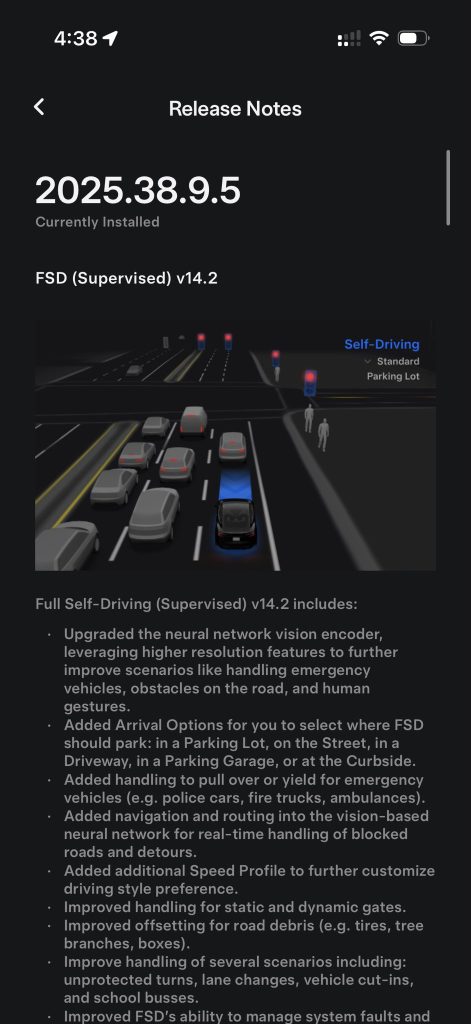
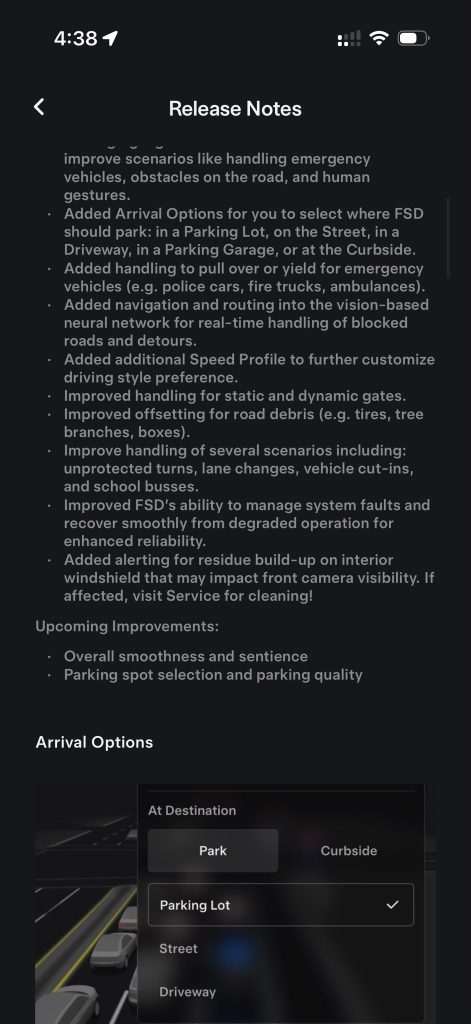
Release Notes
2025.38.9.5
Currently Installed
FSD (Supervised) v14.2
Full Self-Driving (Supervised) v14.2 includes:
- Upgraded the neural network vision encoder, leveraging higher resolution features to further improve scenarios like handling emergency vehicles, obstacles on the road, and human gestures.
- Added Arrival Options for you to select where FSD should park: in a Parking Lot, on the Street, in a Driveway, in a Parking Garage, or at the Curbside.
- Added handling to pull over or yield for emergency vehicles (e.g. police cars, fire trucks, ambulances.
- Added navigation and routing into the vision-based neural network for real-time handling of blocked roads and detours.
- Added additional Speed Profile to further customize driving style preference.
- Improved handling for static and dynamic gates.
- Improved offsetting for road debris (e.g. tires, tree branches, boxes).
- Improve handling of several scenarios including: unprotected turns, lane changes, vehicle cut-ins, and school busses.
- Improved FSD’s ability to manage system faults and improve scenarios like handling emergency vehicles, obstacles on the road, and human gestures.
- Added Arrival Options for you to select where FSD should park: in a Parking Lot, on the Street, in a Driveway, in a Parking Garage, or at the Curbside.
- Added handling to pull over or yield for emergency vehicles (e.g. police cars, fire trucks, ambulances).
- Added navigation and routing into the vision-based neural network for real-time handling of blocked roads and detours.
- Added additional Speed Profile to further customize driving style preference.
- Improved handling for static and dynamic gates.
- Improved offsetting for road debris (e.g. tires, tree branches, boxes).
- Improve handling of several scenarios, including unprotected turns, lane changes, vehicle cut-ins, and school buses.
- Improved FSD’s ability to manage system faults and recover smoothly from degraded operation for enhanced reliability.
- Added alerting for residue build-up on interior windshield that may impact front camera visibility. If affected, visit Service for cleaning!
Upcoming Improvements:
- Overall smoothness and sentience
- Parking spot selection and parking quality
News
Tesla Model X lost 400 pounds thanks to these changes
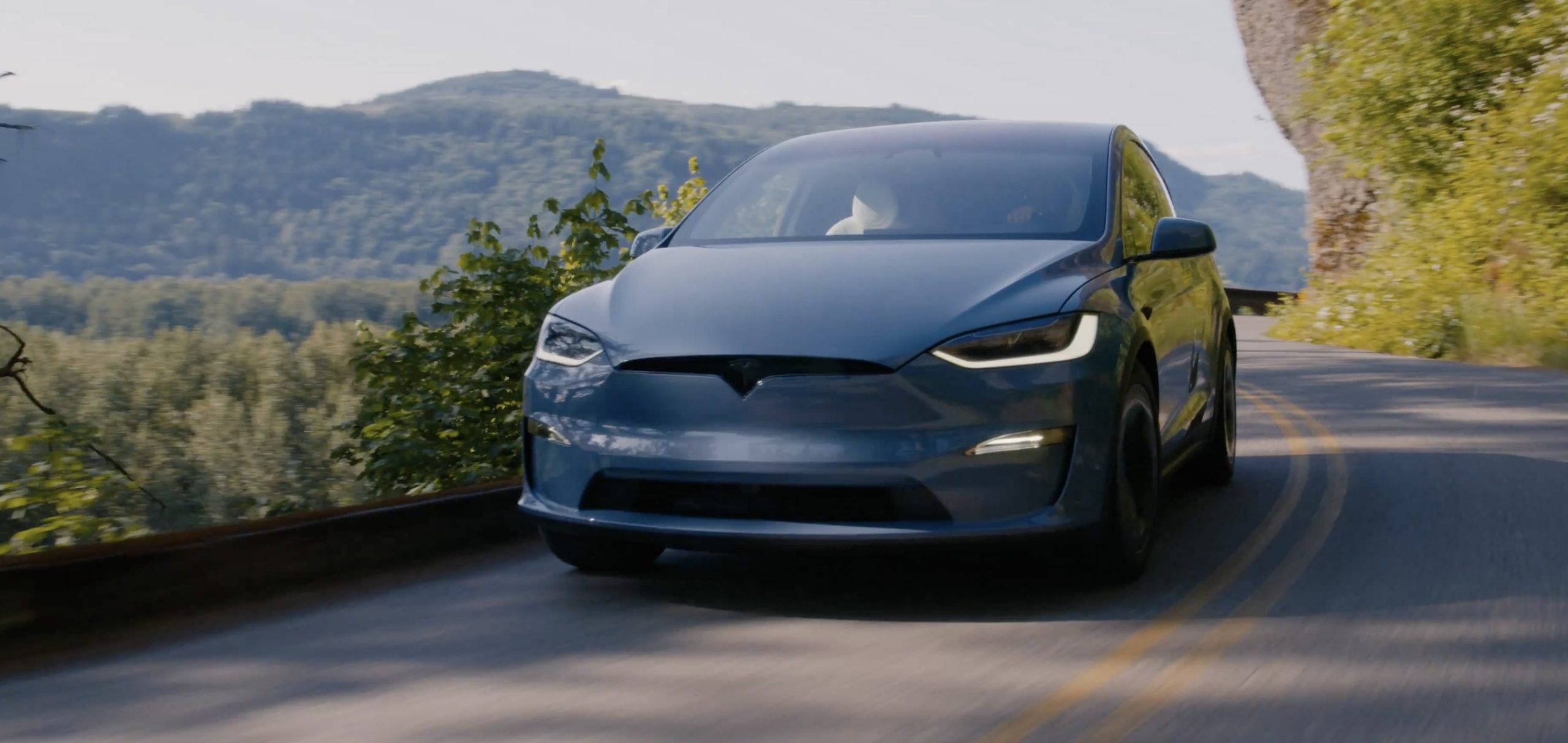
The Tesla Model X has always been one of the company’s most loved vehicles, despite its low sales figures, which can be attributed to its high price tag.
However, the Model X has been a signature item on Tesla’s menu of cars, most notably recognized by its Falcon Wing Doors, which are aware of its surroundings and open according to what’s around it.
But recent improvements to the Model X were looking slim to none, but it appears most of the fixes actually happened under the body, at least according to Tesla’s Vice President of Powertrain, Lars Moravy.
In a recent interview with Car and Driver, Moravy detailed all of the changes to the 2026 iteration of the vehicle, which was about 400 pounds lighter than it was originally. The biggest change is a modification with the rear motor, switching from an induction-type motor to a permanent-magnet design and optimizing the half-shafts, which shed about 100 pounds.
Tesla also got “almost 80 pounds out of the interior bits and pieces,” which “included making parts thinner, different manufacturing process choices, and incorporating airbag-deployment requirements into the headliner fabric,” the report said.
Additionally, the standard five-passenger, bench seat configuration saved 50 pounds by ditching pedestal mounting. This also helped with practicality, as it helped the seat fold flat. Engineers at Tesla also saved 44 pounds from the high-voltage wiring through optimizing the wiring from the charge-port DC/DC converter and switching from copper to aluminum wiring.
Tesla makes a decision on the future of its flagship Model S and Model X
Tesla also simplified the cooling system by reducing the number of radiators. It also incorporated Nürburgring cooling requirements for the Plaid variant, which saved nearly 30 pounds.
Many Tesla fans will be familiar with the megacastings, manufactured in-house by presses from IDRA, which also saves more than 20 pounds and boosts torsional stiffness by around 10 percent. Tweaks to the suspension also saved 10 pounds.
People were truly disappointed with what Tesla did with the Model S and Model X, arguing that the cars needed a more severe exterior overhaul, which might be true. However, Tesla really did a lot to reduce the weight of the vehicle, which helps increase range and efficiency. According to Grok, every 200 pounds removed adds between 7 and 15 percent to range estimations.
This makes sense considering the range estimations both increased by 7 percent from the Model X’s 2025 configuration to the 2026 builds. Range increased on the All-Wheel-Drive trim from 329 miles to 352 miles, while the Plaid went from 314 miles to 335 miles.
News
Tesla launches its new branded Supercharger for Business with first active station
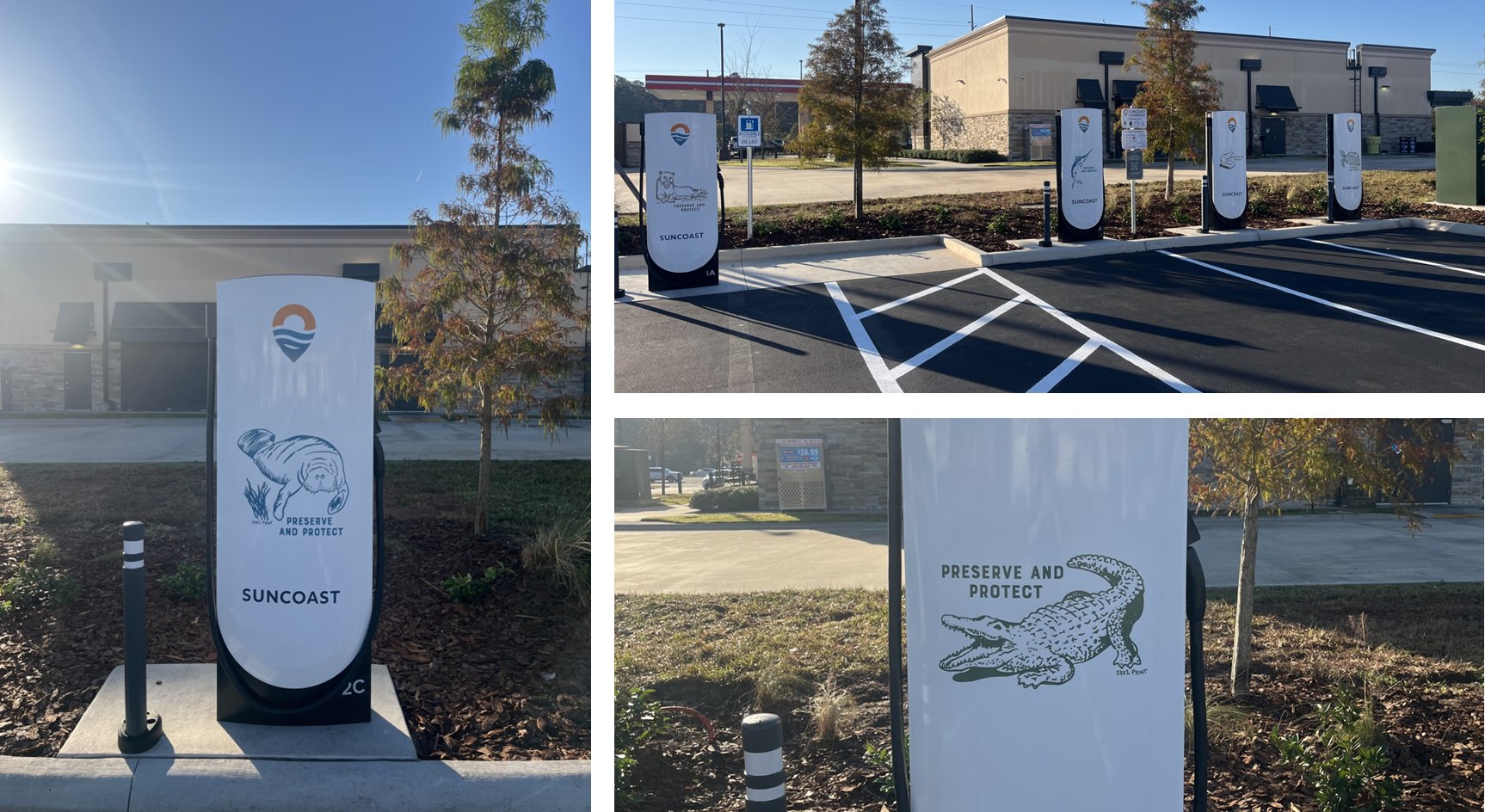
Tesla has officially launched its first branded Supercharger just months after initiating a new program that allows third-party companies to brand their own charging piles.
The site opened in Land O’ Lakes, Florida, and features eight V4 Supercharging stalls offering up to 325 kW of charging speed. It appears it was purchased by a company called Suncoast Credit Union. This particular branch is located Northeast of Tampa, which is on the Gulf of Mexico.
It features graphics of Florida animals, like alligators:
Here’s a video of the graphics being installed on the Tesla Superchargers at this site: https://t.co/oIfEPNZjAH pic.twitter.com/ENWakZ2qT9
— TESLARATI (@Teslarati) November 20, 2025
Tesla launched this program back in September, and it basically was a way to expand its Supercharger presence and also allow companies to pay for the infrastructure. Tesla maintains it. When it announced the “Supercharger for Business,” it said:
“Purchase and install Superchargers at your business. Superchargers are compatible with all electric vehicles, bringing EV drivers to your business by offering convenient, reliable charging.”
The program does a few things. Initially, it expands EV charging infrastructure and makes charging solutions more readily available for drivers. It can also attract people to those businesses specifically.
Tesla launches new Supercharger program that business owners will love
The chargers can also be branded with any logo that the business chooses, which makes them more personalized and also acts as an advertisement.
The best part is that the customers do not have to maintain anything about the Supercharger. Tesla still takes care of it and resolves any issues:
“We treat your site like we treat our sites. By providing you with a full-service package that includes network operations, preventative maintenance, and driver support, we’re able to guarantee 97% uptime–the highest in the industry.”
It appears the Superchargers will also appear within the in-car nav during routing, so they’ll be publicly available to anyone who needs to use them. They are still available to all EVs that have worked with Tesla to utilize its infrastructure, and they are not restricted to people who are only visiting the business.








